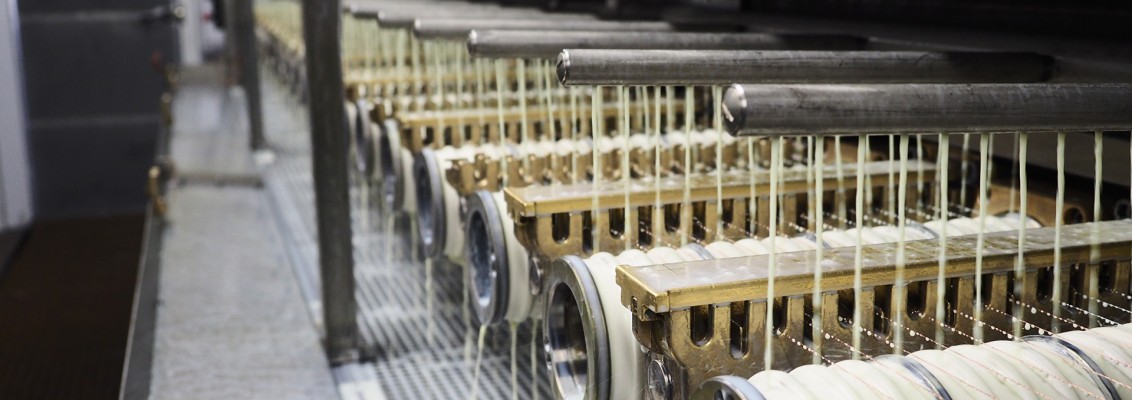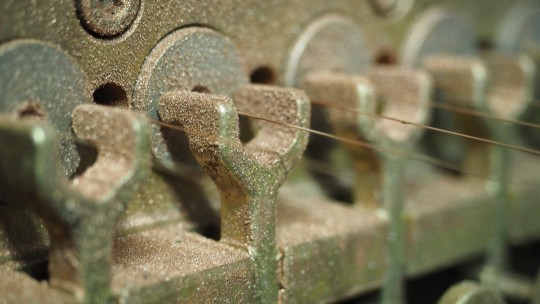How Cables Are Made – Step 1: Wire Drawing
When producing cables and wires, every little detail counts. In the first part of our new series, you will learn how wires are made.

With the exception of fibre-optic cables, all cables and wires have a metal conductor, typically made of copper. Part 1 of our new series on cable production offers insight into how conducting wires, including very fine ones, are manufactured. The starting material is wire that has been roughly rolled. The copper wire is then cold-drawn through a tapered opening known as a drawing die. This type of metal forming is referred to as “wire drawing”. The drawing hol is made of PCD (polycrystalline diamond) or diamond, the hardest material on earth. It is set in a frame made of stainless steel. This means that the drawing stone retains its shape precisely even over prolonged use. State of-the-art wire-drawing machines, such as those used at HELUKABEL, simultaneously draw wires through multiple drawing dies to the desired size in a single step.

Copper however, is particularly prone to strain hardening. When its structure is elongated in the forming direction, it becomes hard and brittle. An annealing process known as recrystallization annealing is needed afterwards to restore the copper‘s original ductility. To prevent the copper wire from coming into contact with oxygen, it runs through an induction annealer containing an inert gas atmosphere. The shielding gas displaces the oxygen, so that oxidation on the hot metal surface cannot occur. After the final drawing, the end products are fine and extra-fine copper wires with diameters as small as 0.05 mm (0.002 inches). The individual wires are then laid together to form a stranded conductor. Such conductors are much more flexible than a single solid conductor and hence less likely to break when bent, but the costs of manufacturing them are considerably higher. You can discover how these stranded conductors are made in Part 2 of our “How Cables are Made” series.
Copper: did you know?
- a kilogram (2.2 pounds) of copper can be drawn into a 57.12-kilometre (35-mile)-long wire (0.05 mm diameter).
- state-of-the-art drawing machines can achieve speeds of up to 32 m/s (105 ft/s), depending on factors such as the quality of the copper, emulsion, drawing dies, dimension, etc.
- global production of copper reached 19.4 million tonnes in 2016
- the world’s biggest producer of copper is Chile with 5.5 million tonnes (2016), followed by Peru (2.3 Mt) and China (1.74 Mt)
